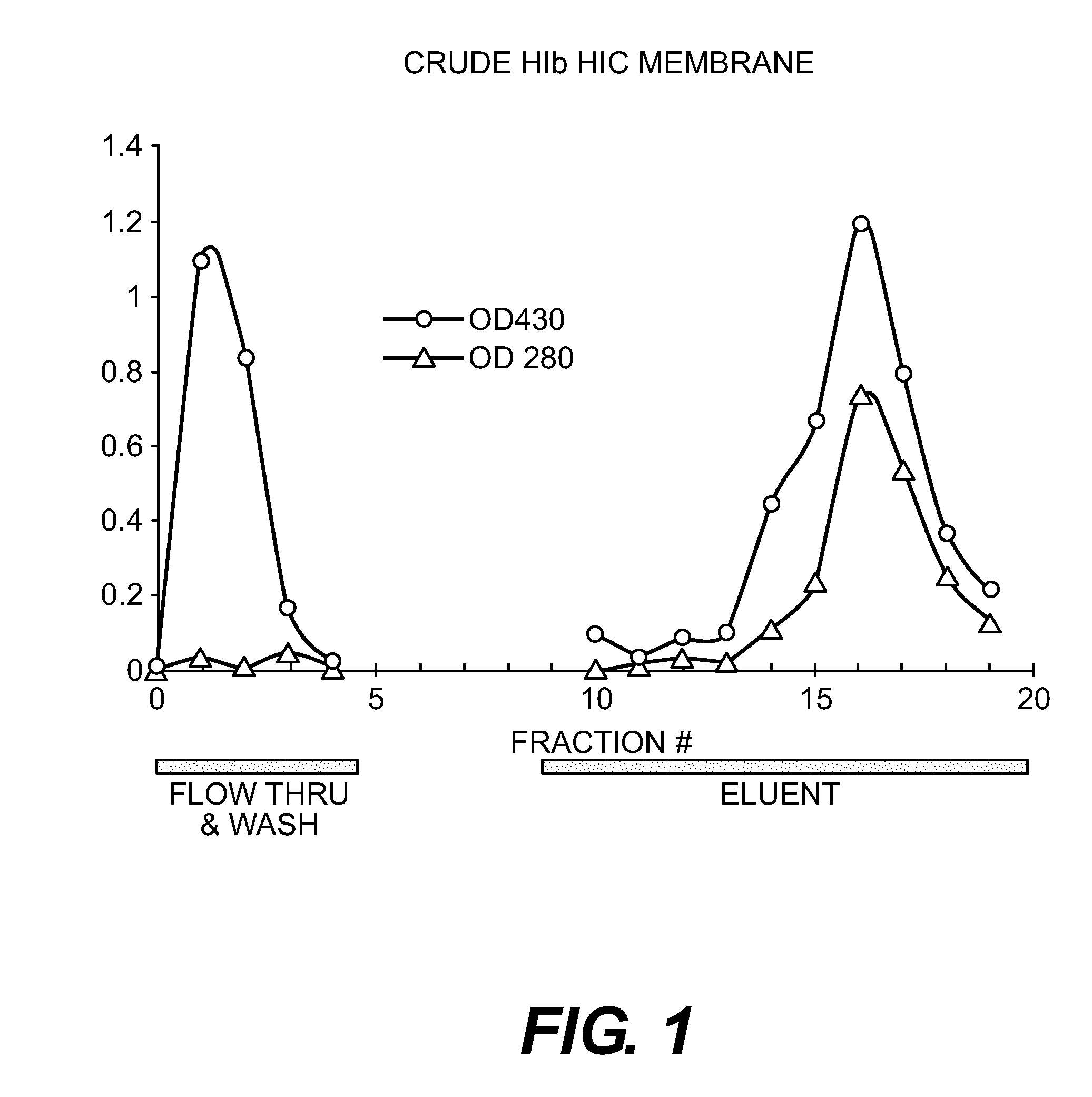Method of Producing Protein-Carbohydrate Vaccines Reduced in Free Carbohydrate
- Summary
- Abstract
- Description
- Claims
- Application Information
AI Technical Summary
Benefits of technology
Problems solved by technology
Method used
Image
Examples
examples
Purification of Bib Conjugate Using HIC Membranes
[0035]Hib PRP is the capsular polysaccharide of Haemophilus influenzae type b. Hib PRP was linked to tetanus toxoid (TT) as generally described by Schneerson et al. Infect Immun, 152:361, 1980. This material was prepared at the Serum Institute of India (Pune, India) as an unpurified mixture, containing both conjugated and unconjugated PRP. This is referred as crude Hib conjugate.
[0036]15 ml Hib conjugate, containing both Tr-Hib PRP conjugate and unconjugated Hib PRP was made 2 M ammonium sulfate and adjusted to pH 6. The final volume was about 17 ml. A Sartorius HIC phenyl membrane unit (3 ml) qA equilibrated with 50 mM sodium phosphate buffer+2 M ammonium sulfate, pH 6. 6 ml of the conjugate in AS buffer was pumped through the device, followed by the equilibration buffer (˜35 ml total) with fractions of approximately 8 ml collected. A gradient from 2 M ammonium sulfate to 0 M was run with fractions of 2 ml collected. Fractions were a...
PUM
| Property | Measurement | Unit |
|---|---|---|
| Fraction | aaaaa | aaaaa |
| Fraction | aaaaa | aaaaa |
| Concentration | aaaaa | aaaaa |
Abstract
Description
Claims
Application Information
 Login to View More
Login to View More - R&D
- Intellectual Property
- Life Sciences
- Materials
- Tech Scout
- Unparalleled Data Quality
- Higher Quality Content
- 60% Fewer Hallucinations
Browse by: Latest US Patents, China's latest patents, Technical Efficacy Thesaurus, Application Domain, Technology Topic, Popular Technical Reports.
© 2025 PatSnap. All rights reserved.Legal|Privacy policy|Modern Slavery Act Transparency Statement|Sitemap|About US| Contact US: help@patsnap.com



